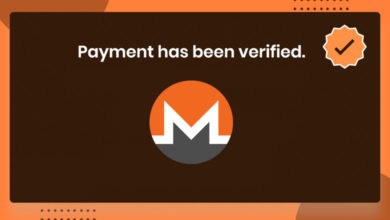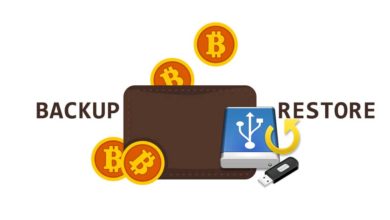BTC transaction: 1 input, 2 outputs – Why 2 outputs when sent to 1 address?
Did you just transferred Bitcoin and noticed that part of your BTC has been sent to some random address that you’ve never seen or used before? Nothing to worry. This is normal with Bitcoin. Your coins are not sent to some random address but to the change address that you own.
Recently a user contacted us seeking for help. They seem to have transferred Bitcoin from electrum wallet to their Binance account. Upon checking the transaction details on block explorer they noticed that there was a 2nd address where some of their coins were sent.
If it is your first Bitcoin transaction then this may seem confusing and shocking. Do not worry. This is normal and the second output that you see is the change from the transaction which is returned back to you (to the sender).
How to view change address?
Whether you sent Bitcoin from core wallet, electrum wallet or any Bitcoin wallet. You can view the list of change address that your wallet generated for you.
In electrum go to address tab and scroll down to the bottom of the list. Or click type and all of the change address will appear first. These are the address where your coins are returned back to.
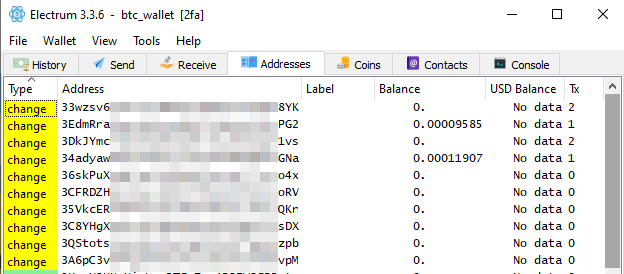
In core wallet here is how to view the change addresses. First go to settings and enable coin control features. Once it is enabled go to send tab, click inputs and click received with label tab. You should see the list of change address generated by your wallet.
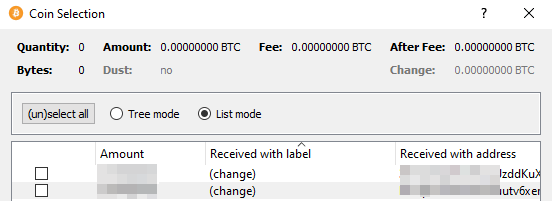
If you transferred it from the exchange then you don’t have to worry about this. Exchange will take care of it.
Okay, but why does wallet add another output address whenever I send a transaction. Also why can’t it send the exact amount that I’m sending and why not return the change to the same address?
Why 2 outputs when sent to 1 address?
We’ve already explained Bitcoin change address and output. Anyways here is what you need to know.
A Bitcoin transaction can contain multiple addresses that is it can have 1 or more inputs and 1 or more outputs. The total value of inputs will be distributed to the outputs.
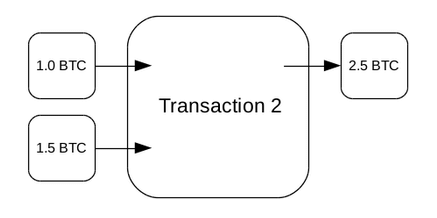
Now let’s understand why are there two transaction outputs when sending to one address?
1 input, 2 outputs
Let’s say you only have a $20 Bill and you are purchasing something in a shop that cost $15. You are giving $20 bill to the cashier because that is the only bill you have. The cashier takes the $20 bill and gives you the change amount of $5.
It’s the same with Bitcoin. Let us assume that you’ve bought 1 BTC from exchange and transferred it to your wallet. Later on you decide to purchase something using your Bitcoin that is worth 0.25 BTC. Now not just 0.25 BTC but the whole amount is sent from your wallet.
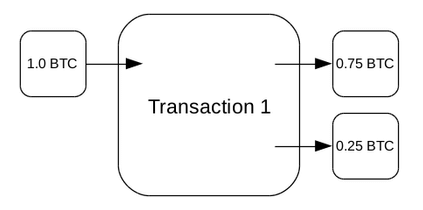
This is how you see 1 input and 2 outputs. Where the amount you wanted to send goes to the intended recipient address. The remaining change is returned back to the change address that your wallet maintains..
Okay, but why not return it back to the same address from where I sent?
Choosing change address
In most wallets you have the option to choose the change address. You can use the same address that you’ve sent from or a completely new address. The change from the transaction will return back to the address that you specified.
However it is not recommended to use the same address which you’ve used previously to receive the change output.
To protect anonymity it is better to let the wallet generate a new change address for you.
Note: In most transaction a change address is involved which is something your wallet creates. So whenever you make a transaction consider backing up your wallet.
How to backup Bitcoin core wallet
Hope it explains the 2 outputs in your Bitcoin transaction.
If you are new then check our knowledge base where you can find lots of useful information to learn about Bitcoin and cryptocurrencies.


